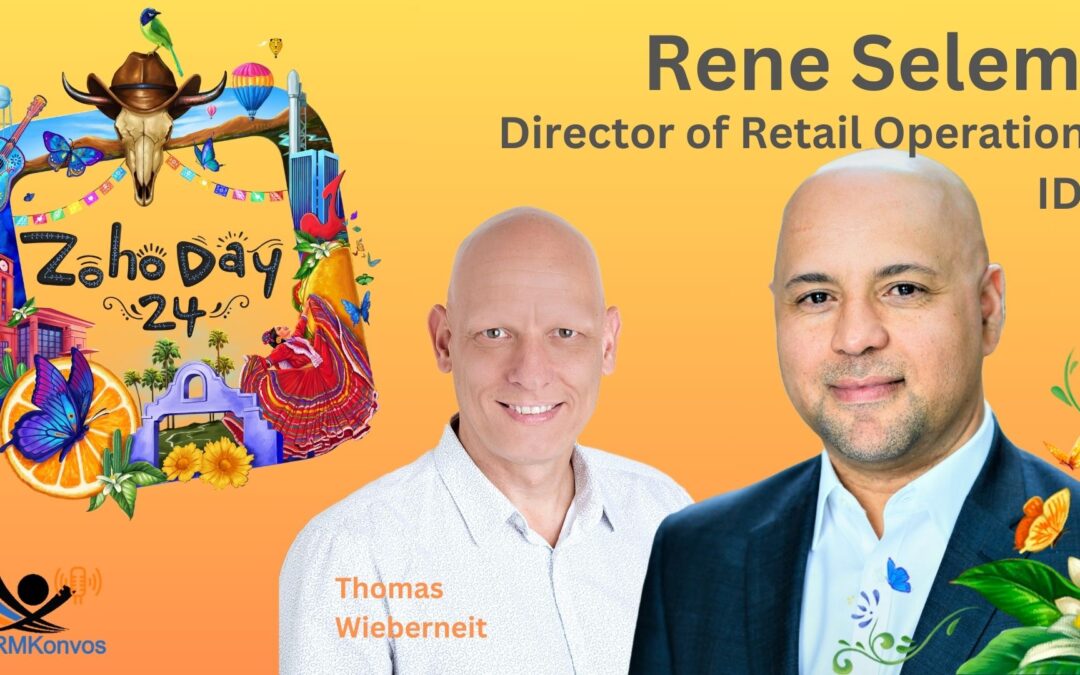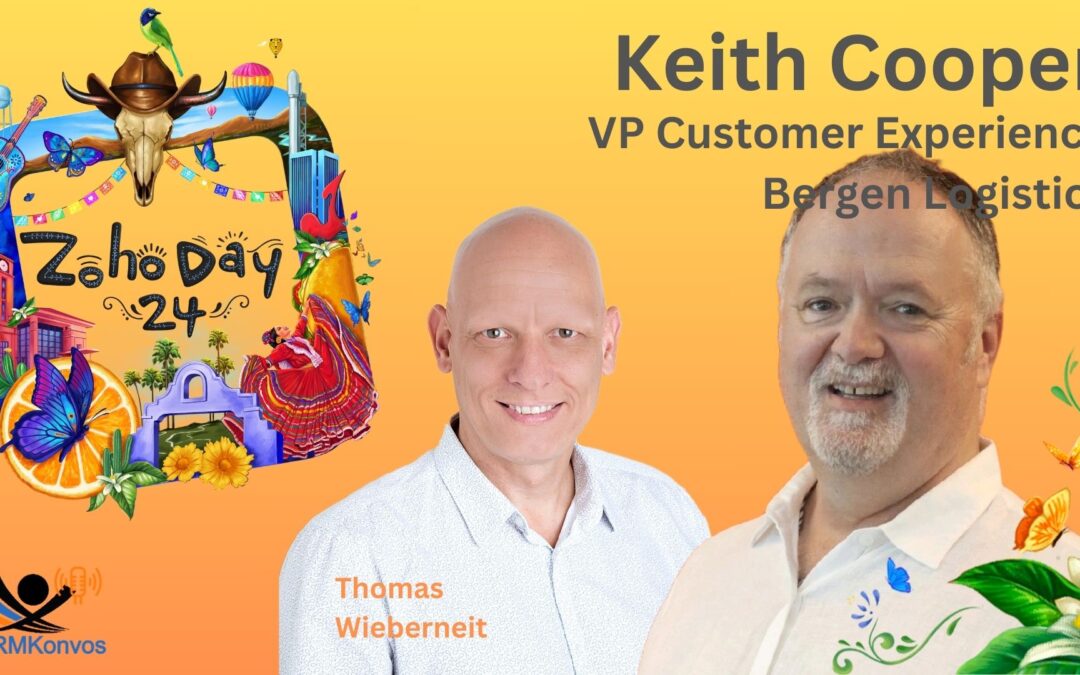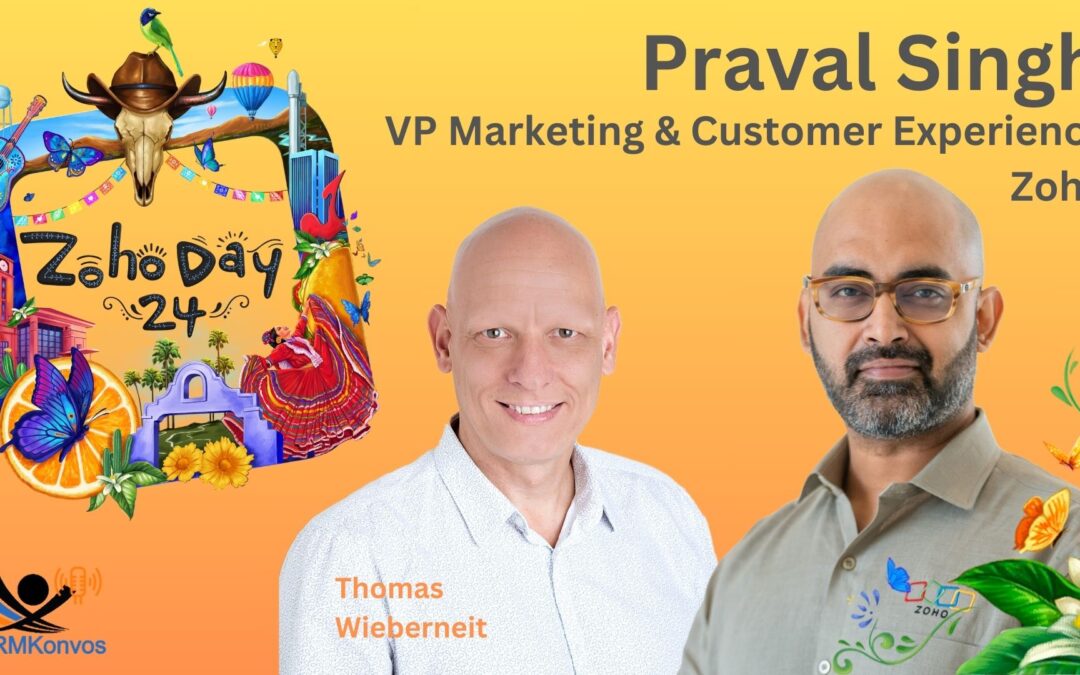
by twieberneit | Jun 28, 2024 | Blog, Case Study, Sponsored |
Zoho is well-known as a technology vendor for the SMB market. The company has products that support the whole range from single proprietors to larger companies. This range in itself is remarkable. For some time now, the company is diligently working on moving upmarket and to also support enterprises. This is not in the least, as with a growing customer base, more and more existing customers grow into the enterprise segment. The transition from SMB to enterprise is far from trivial. Sales models change, messaging, consulting approaches, support infrastructure, even the demand for the size and structure of the ecosystem are different in the enterprise sector. So, how does Zoho fare? To find out, I had a conversation with Parl Johnson, “Chief Nerd” at Nuvia Smiles. You can find our complete conversation on YouTube. Interview with Parl Johnson, Chief Nerd at Nuvia Smiles Nuvia Smiles is a dental implant company and currently has 1,500 Zoho seats. The company has more than 30 locations across the United States. Its specialty is to provide a 24-hour turnaround time to get permanent teeth into the patient’s mouth. This way, they do not have to wait long periods of time to get dental replacements. This requires a very rigorous process and having a lab at every location. Decision making is highly decentralized to support this fast process. The challenge with this degree of decentralization is that there are many disconnected applications and with that also very decentralized data. Nuvia Smiles identified 80 different applications with a scope of consolidation across the 30 locations. While this initially facilitates fast growth, it can become a...

by twieberneit | Jun 12, 2024 | Analysis, Blog |
Zoho’s annual main customer event Zoholics took place in Austin, TX last week. The company presented updates to products and strategy and gave partners the opportunity to present themselves on a big show floor. In parallel to the event, Zoho published some interesting news about product enhancements in four areas, namely security and privacy, CRM for Everyone, collaboration, and platform tools. In addition, Zoho reaffirmed its AI strategy. Of course, CEO Sridhar Vembu set the scene in his usual humble, yet no-nonsense way. He detailed out, why Zoho is truly different. Zoho’s strategy of transnational localism with a clear focus on investing into employees is well known by now, and we see it working. Explaining the strategy with another twist, Vembu laid out five principles that will continue to be essential for every business software vendor to thrive: Investing in a full product portfolio with breadth and depth Offering attractive bundles that have deep value Investing into exceptional service and support Improving interoperability with more prebuilt integrations Getting close to the customer with a strong local partner ecosystem With 55 tightly integrated apps and growing, value-oriented bundles, and a thriving ecosystem, Zoho is certainly on a strong way following these principles. Another topic is the way applications get built by software developers. Vembu compares developers to artisans and postulates that software development will become ten times more efficient with the help of generative AI. The developer’s role will change to become far more one of a scientist, leaving the mundane tasks to the system. This way, the whole development cycle as such changes considerably, also enabling vendors to deliver...

by twieberneit | Apr 25, 2024 | Blog, Case Study, Sponsored |
About two years ago, I had the pleasure of speaking with Elie Katz of National Retail Solutions, NRS, about how he and his team “zohotized” NRS. During this year’s ZohoDay24, I was happy enough to continue this conversation with Rene Selemi, director of retail operations at IDT Corporation, the parent corporation of NRS. IDT is a global provider of communications and payment services, headquartered in Newark, New Jersey. The company employs around 1,700 people. You prefer to watch the interview? You can do it right from here. IDT started to use Zoho around 7 years ago for its internal startup NRS. The scope was customer care with the objective of enabling the business to respond to quick and effectively to customers. IDT and NRS originally settled on Salesforce but after using it for about a year decided to move away in favor of Zoho as it was a better fit and faster to implement. Says Selemi “We had Salesforce for a while for about a year, but at the end we decided to go away from Salesforce and actually implemented Zoho. [..] It was a better fit [and] it was quick to implement. That was number one. We did it when minimum resources and we did it very fast.” This is very much in line with what Elie Katz told me two years ago: “the other implementation still did not yield results for his business in spite of mounting bills”. The two main criteria that IDT worked and works on, are functional fit and cost. What started as a point solution has become the backbone for NRS since then...

by twieberneit | Mar 8, 2024 | Blog, Case Study, Sponsored |
As part of my series of customer interviews, I recently had the chance of speaking with Keith Cooper, vice president of customer experience at Bergen Logistics. Bergen Logistics is a global third party logistics provider, based in North Bergen, New Jersey. It primarily serves the luxury fashion and home goods segments but is available in other verticals, too. In Keith’s words “When you order something from a company’s website online, the order comes to us. We pull the order, we pack the order, we ship the order, and it arrives to you in most cases the next day.” If you prefer to watch the interview, you can do so here. Bergen Logistics started to search for a CRM solution with the original focus on the-lead-to-order process. The trigger was the owner of the company inquiring for the status of a lead that he had given to sales a while ago – because the prospect was inquiring. At that time, “there was a belief [in the sales organization] that it was okay to take three or four days to respond to a client when they wanted to talk to us because we’re very bespoke; the salespeople sort of have this view that they would wait.” Not only did this risk the company reputation but additionally, available data showed that 40 percent of the prospects didn’t want to wait that long. They were trying to resolve a business issue. This translated into loss of business. The company did research and narrowed down the competition to Salesforce and Zoho. They did an in-depth analysis and went for Zoho. “Between Zoho and Salesforce...

by twieberneit | Mar 4, 2024 | Blog, Sponsored |
What the heck is customer experience, and who is responsible for it? These are two very good questions, for which I, myself, have some very distinct answers. Let’s start with them, before I dive deeper into that topic with Praval Singh, VP Marketing for Customer Experience at Zoho, who – naturally – has some good answers, too. You prefer the original? Of course, you can watch the complete conversation, too. Praval Singh of Zoho talks customer experience Here it goes. Re customer experience, I am with Paul Greenberg and Bruce Temkin, who some years ago defined customer experience. Paul defines customer experience as “how the customer feels about a company over time” while Temkin defines it as “the perception that customers have of their interactions with an organization”. Either does it for me. It is the customer’s perception. This makes it quite easy to answer the second question. Who is responsible? Answer: The customer! Why? Because the organization cannot control how I perceive my interactions because it simply doesn’t know enough about my current context, aka situation, at any given time. Organizations regularly do not know enough about my cultural background, my current situation, or my current mood. What they can do, is taking an educated guess, based upon whatever data and algorithm or AI they have at hand. What the organization can control to some extent, is their half of an engagement. This means that the best intended engagements can result in unintended and undesired perceptions. Customer experience is a function of the customer’s experiences, the expectations towards a brand/product/company and the customer’s mood at the time of...






